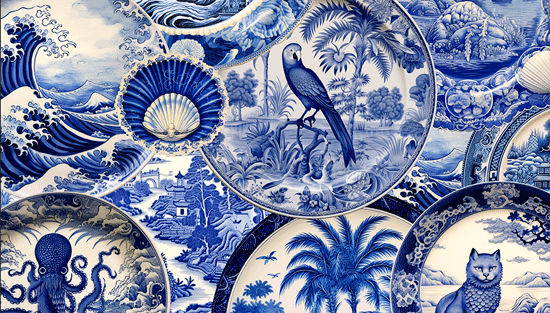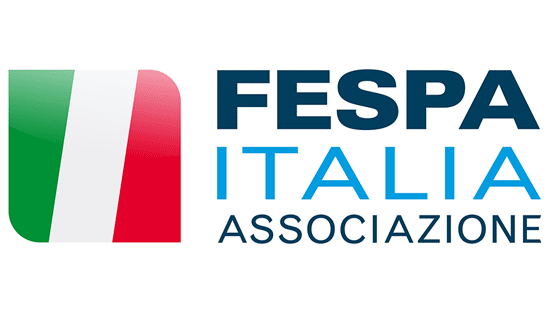Peter Buttiens of ESMA: print as an integrated production solution

The CEO of ESMA, the European Specialist Printing Manufacturers' Association, on the unique challenges in his sector, from industrial inkjet to biomedical applications.
Why does ESMA remain important in today's business climate?
As a European association for industrial printing, with members from many different market sectors, ESMA sees a more detailed picture of the ongoing situation. We collect first-hand news on business conditions and keep the community informed. Knowledge transfer, sharing of best practice and new approaches are more important than ever.
As printing processes have entered more and more applications, ESMA has positioned itself at the crossroads of various industries. The organisation turned 30 last year, and over that time, we have built a very solid network of connections. With 60 to 70 members, we can afford to maintain personal and frequent contact with all companies, direct them to the right partners and new potential, and continuously collect feedback on new developments.
How has the industry changed for the better, or the worse, in your time?
It depends what you produce or supply. Industrial printing is not like graphic printing, always producing finished products like a banner, roll-up, display. In automotive, it can be a printed part with pressure sensitive adhesive for a sub-part for doors, or part of in-mould electronics for a mirror assembly.
In essence, industrial printing is different from the traditional use of printing for graphical decoration – it is more about the pure deposition of materials. This has created a boost in printed electronics (PE), which has been accelerated by the Internet of Things (IoT) and found its way into many applications, from packaging to healthcare items.
The change of production techniques has opened up opportunities for printing to contribute to manufacturing in new ways, unexpected a decade ago. For example, bimetallic tungsten for an exhaust catalyst is made with many layers of screen printing. Today, it is in almost every car and still produced by printing! This is one of the many small items printers can produce in the automotive industry. But more importantly it brings much more flexibility in production. All industries must become lean and more sustainable, and this is a springboard for industrial printing!
ESMA undertook a survey about COVID-19 in the summer. What can you tell us about the findings?
It was fascinating to see the acceleration of change. The traditional markets suffered more from the first wave, but the less traditional saw a broader horizon of opportunities, with printed electronics applications an undisputed winner. This could be due to the needs in biomedical usage, such as alternative diagnostic kits for disease. More creativity was demanded by the market and the more advanced solutions gained relevance and importance.
The packaging industry increased its workload due to the necessity of online shopping and the popularity of takeaway meals. Packaging in all sizes and formats remain in high demand, as well as increased personalisation for shops and restaurants. Marketers continue to focus on the customer experience benefits of their clients packaging and accompanying printed information.
What do you think about networking between the suppliers and the print community?
It is important to involve the whole supply chain and the professional customers. This might be easier for large format graphics, but in the industrial sector, this network is much more hidden and scattered across different industry segments. Many industrial printers don’t actually call themselves printers: they are third-party suppliers and work for specific sectors such as automotive, pharmaceutical, personal care industry, food and beverage, and so on.
What are the unique challenges for your members?
Industrial printing takes a different approach to large format graphical printing. It is printing as a process and not a final product. It is also much more technical and dependent on the industrial requirements of the customer. The industrial printing market is still dominated by conventional solutions such as screen printing, but certain applications are also becoming accessible through digital inkjet and other techniques. That is why we see many hybrid systems, mixed lines of conventional processes and new digital solutions at industrial printers.
Since the second COVID-19 wave we have observed a gradual return to average growth. However, the industry is encountering new obstacles, such as the uncontrolled fluctuations in delivery and prices of raw materials – these in turn result in higher prices for the customers and a ripple effect in related sectors. Transport from Asia is under pressure, with fewer available shipment containers and fewer flights, both passenger and cargo. Understandably, the freight priority goes to medical equipment end pharmaceuticals. In 2021, the state of the industry remains complicated; therefore our role is to communicate across the whole supply chain that the focus of the coming months will be on efficient planning and optimisation, while taking into account longer delivery times and higher prices.
What important trends can you see in the industry that are adding value and optimising processes?
In industrial printing we strive to make the process more flexible but also easier. The best examples are in printed electronics. Engineers are constantly developing more efficient clean room manufacturing cells for printing (deposition) to reduce energy consumption whilst improving process efficiency. The scope of industrial printing is not limited to inks with colour pigments but is as likely to include carbon, graphite, graphene, conductive metals, dielectric materials, adhesive components.
There is such an enormous boost in printing for other manufacturing steps. Screen printing sometimes has the benefit of using micro size particles, whereas most inkjet applies nano particles. Printers are also competing with other spray and coating solutions, creating more efficiency by achieving specific deposition in the right locations (as we know from decorative printing). To be even more clear, the printing becomes a production step or part of an end product. This is obvious in automotive, home electronics and appliances but not only there.
What does your typical business day at ESMA look like?
Under pre-COVID circumstances, we would be preparing our Drupa member pavilion right now: negotiating the last details, designing the stands, rolling out the promotional campaign, finalising special features such as sample galleries and expert talks.
But last year, we had to learn to allocate our resources differently. Fortunately, we can still find a use for the expertise of our staff: be it in marketing and communications, administration and event logistics, or strategy, planning and member retention. What is crucial during this ‘home-working period’ is that we stay connected and motivated as a team and that we are always ready to take on new projects as opportunities emerge.
Become a FESPA member to continue reading
To read more and access exclusive content on the Club FESPA portal, please contact your Local Association. If you are not a current member, please enquire here. If there is no FESPA Association in your country, you can join FESPA Direct. Once you become a FESPA member, you can gain access to the Club FESPA Portal.
Topics
Recent news

How AI can benefit your data collection
Printers are collecting data about everything from costs to customers and inventory. But how can AI help you to make the most of that?

No minimum order: the growth of DTF decoration
Andy Rogers at Stahls’ UK and Europe, garment decoration firm based in Braintree, UK and Dillingen, Germany, on the cost and speed benefits of direct to film (DTF) printing.

The design democracy: AI, creativity and interior décor
We spoke to Matt Fletcher of John Mark Ltd and Cheryl O’Meara from the Print Pattern Archive about combining age-old techniques with artificial intelligence (AI) to create exciting new motifs for luxury wall coverings.
